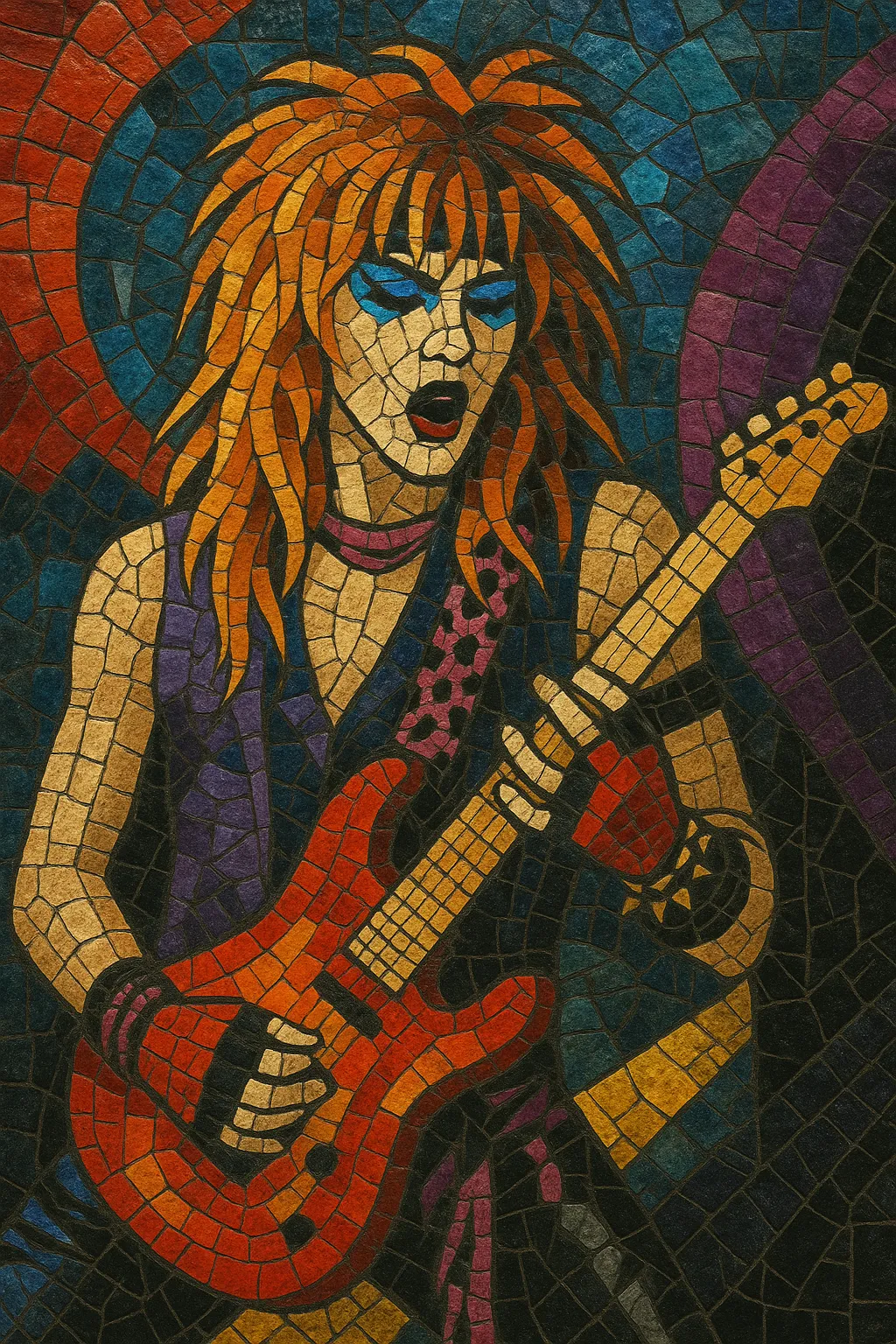
Glam metal (often called hair metal) is a flamboyant strain of 1980s hard rock and heavy metal defined by high-energy riffs, anthemic choruses, and glossy, radio-ready production. It pairs the swagger of hard rock with pop hooks, multi-tracked vocal harmonies, and virtuosic guitar solos.
Visually, the style is theatrical: teased hair, makeup, spandex, and flashy stagewear echo the glam rock of the 1970s, while the music embraces both party-ready anthems and power ballads. The sound is big, bright, and built for arenas and MTV-era music television.
Glam metal grew out of the hard rock and heavy metal scenes of the late 1970s, especially on Los Angeles’ Sunset Strip. It took the showmanship and androgynous fashion of 1970s glam rock and fused it with high-gain guitars, shout-along hooks, and arena-sized production. Early touchpoints included the theatricality of Kiss and the high-voltage guitar heroics popularized by bands like Van Halen.
The genre’s commercial ascent aligned with MTV’s rise. Quiet Riot’s “Metal Health” (1983) became the first metal album to top the Billboard 200, opening doors for Mötley Crüe, Ratt, Def Leppard, Bon Jovi, Poison, and others. The signature sound blended punchy, palm-muted riffs with soaring, harmonized choruses and finger-tapped or whammy-bar-heavy guitar solos. Power ballads—mid-tempo songs with cinematic builds—became radio staples and helped glam metal cross over to mainstream pop audiences.
By the early 1990s, musical tastes shifted. The rise of grunge and alternative rock reframed glam metal’s decadent image as out of step with the cultural moment. Many marquee acts saw commercial declines, while others adapted their sound or went on hiatus.
Despite the downturn, glam metal’s songwriting DNA—big hooks, guitar pyrotechnics, and the power ballad template—remains influential. The look and theatricality helped shape Japan’s visual kei movement, and a 2000s–present revival in sleaze rock and nostalgia tours has kept the style in circulation. Contemporary acts and festivals continue to celebrate the genre’s larger-than-life spirit.
Use two overdriven/distorted electric guitars (rhythm and lead), electric bass, and a punchy drum kit. Add layered backing vocals for gang-chorus impact, and occasional keyboards or synth pads for sheen.
Write tight, catchy riffs using blues and minor-pentatonic vocabulary, often in E or A for open-string punch. Favor power chords, palm muting, and syncopated accents. Lead guitar should feature expressive bends, vibrato, rapid legato runs, tapping, and whammy-bar dives. Modulate up a half or whole step for the final chorus to heighten drama.
Adopt radio-friendly structures (intro–verse–pre–chorus–chorus–verse–chorus–bridge/solo–double chorus–outro). Tempos range from mid-tempo (power ballads ~70–100 BPM) to energetic (~110–160 BPM) for party anthems.
Aim for powerful, high-register lead vocals with stacked harmonies in the chorus. Lyrically, emphasize hedonism, nightlife, romance, rebellion, and an aspirational, feel-good tone. Power ballads should tell emotional, melodramatic stories that build to a cathartic hook.
Mix for size and gloss: doubled/tripled rhythm guitars panned wide, melodic lead lines centered, and prominent backing vocals. Use gated or big-room reverbs (especially on snare) to achieve an arena feel. Visually, embrace theatrical fashion and dynamic stagecraft to complete the genre’s identity.

